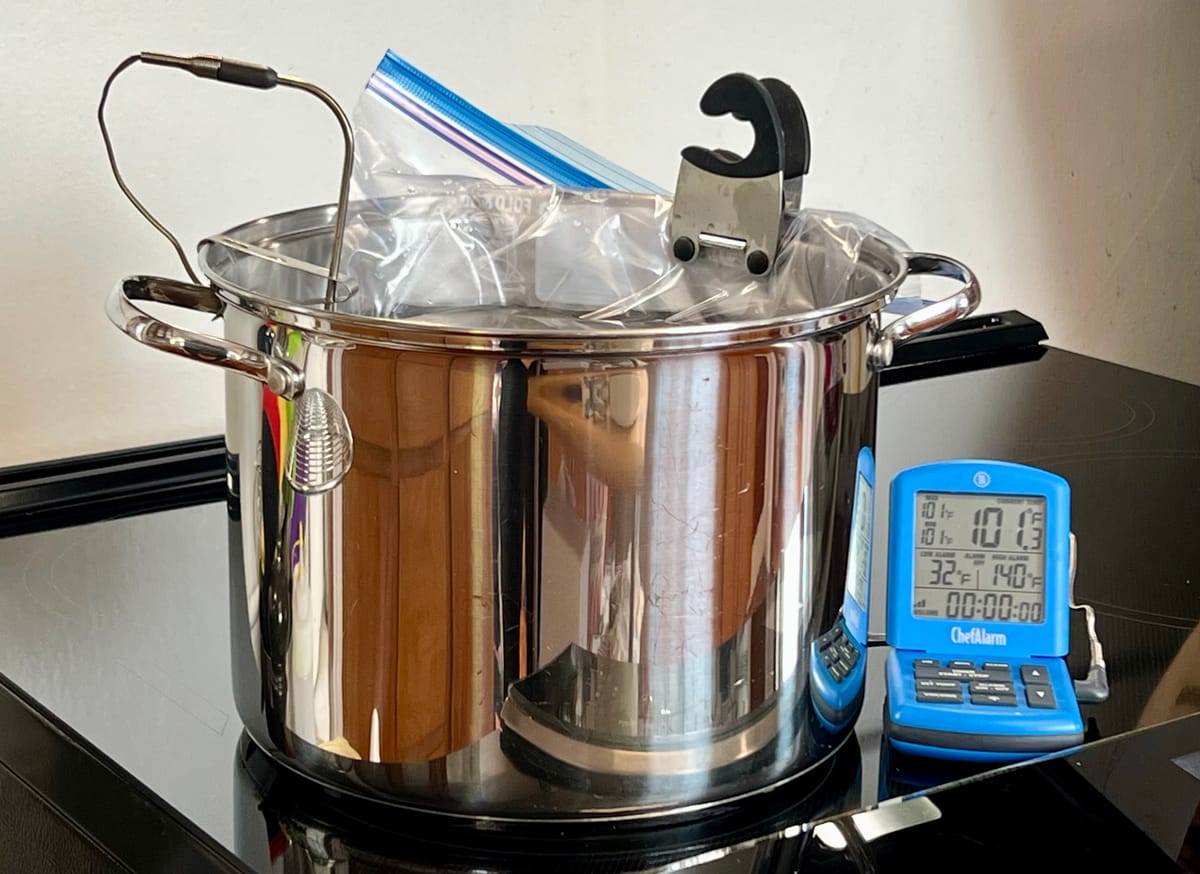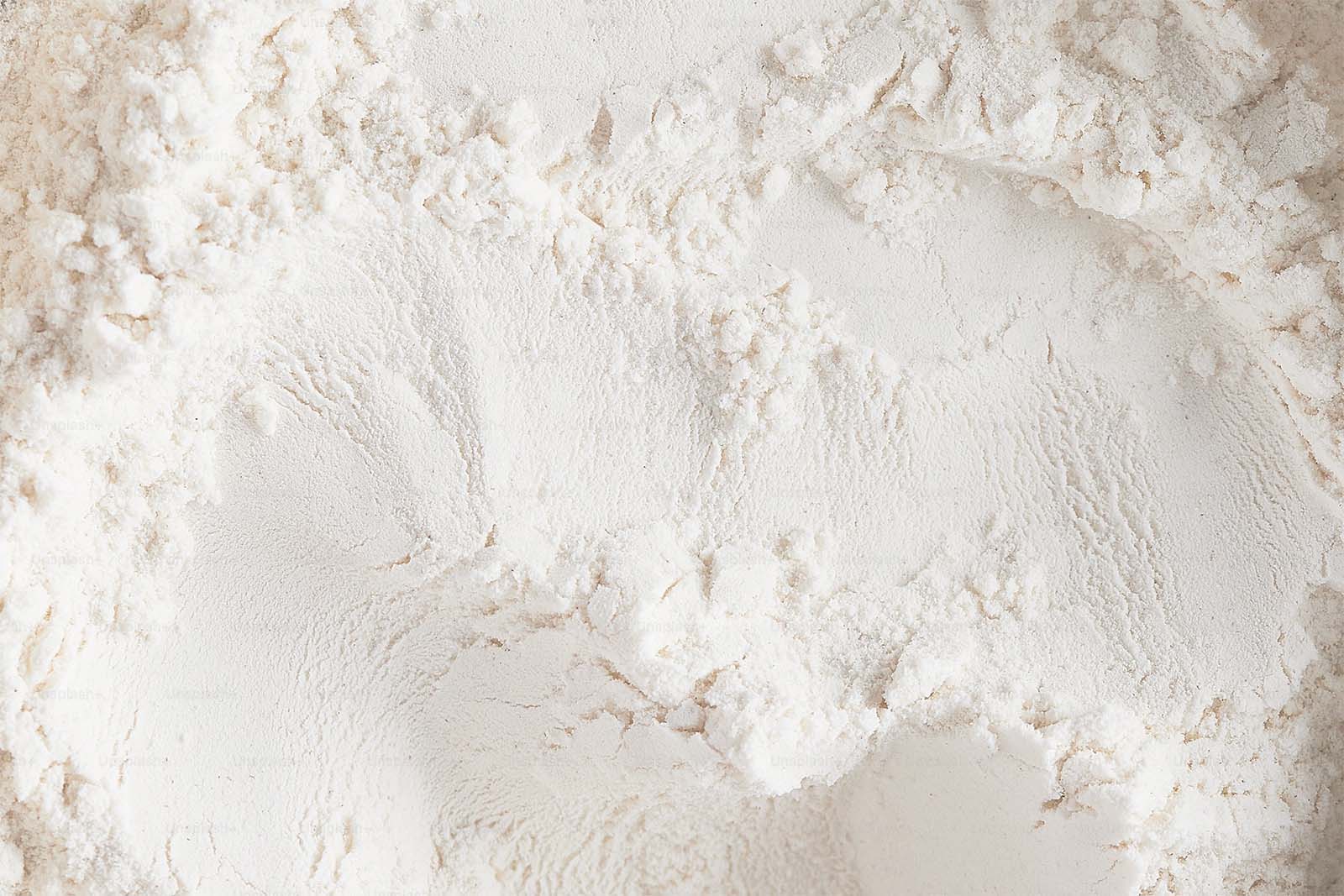How I use sous vide
From pork and chicken to fruit and pickles—plus, how I'm adapting recipes I love to use sous vide.
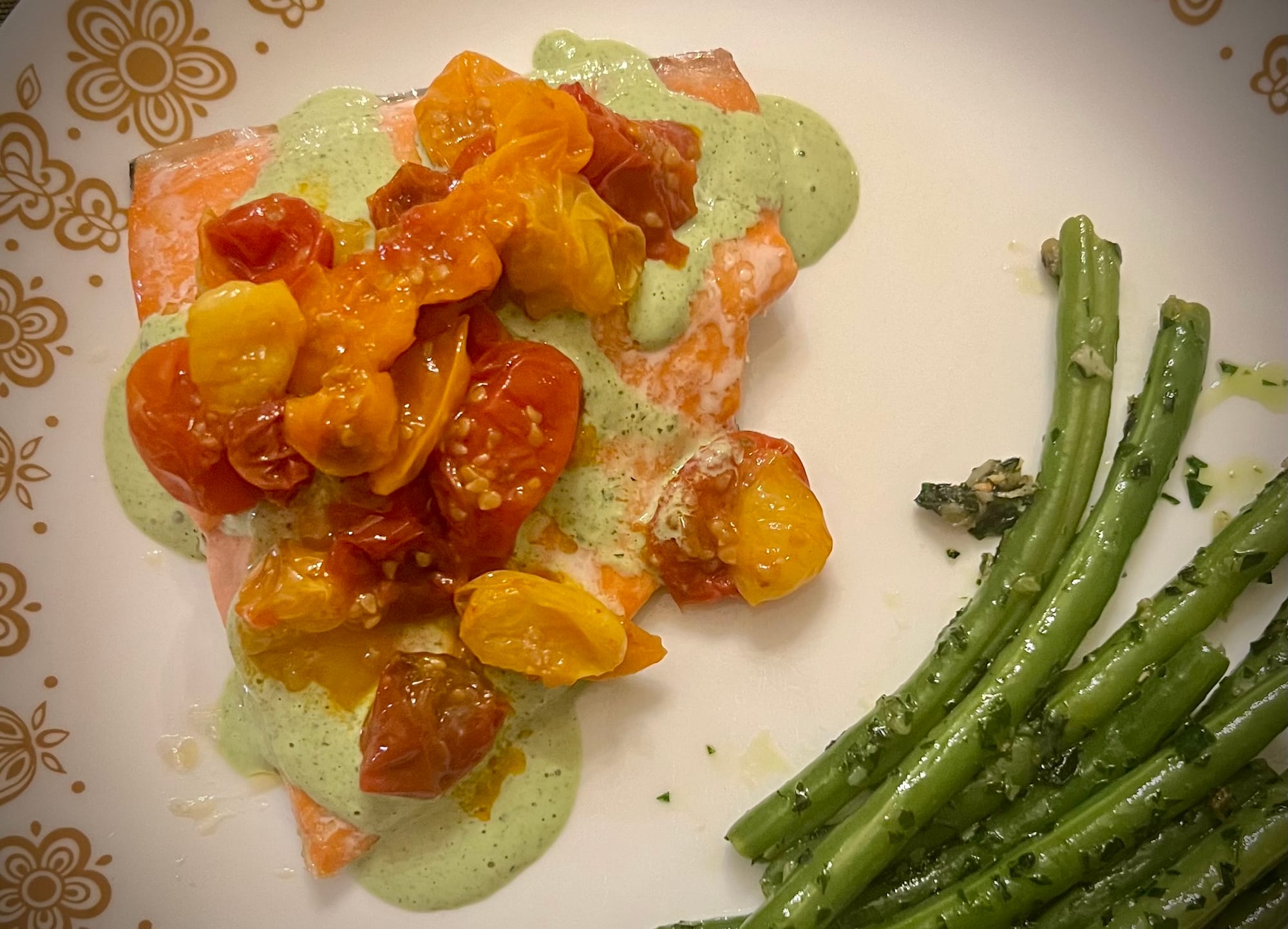
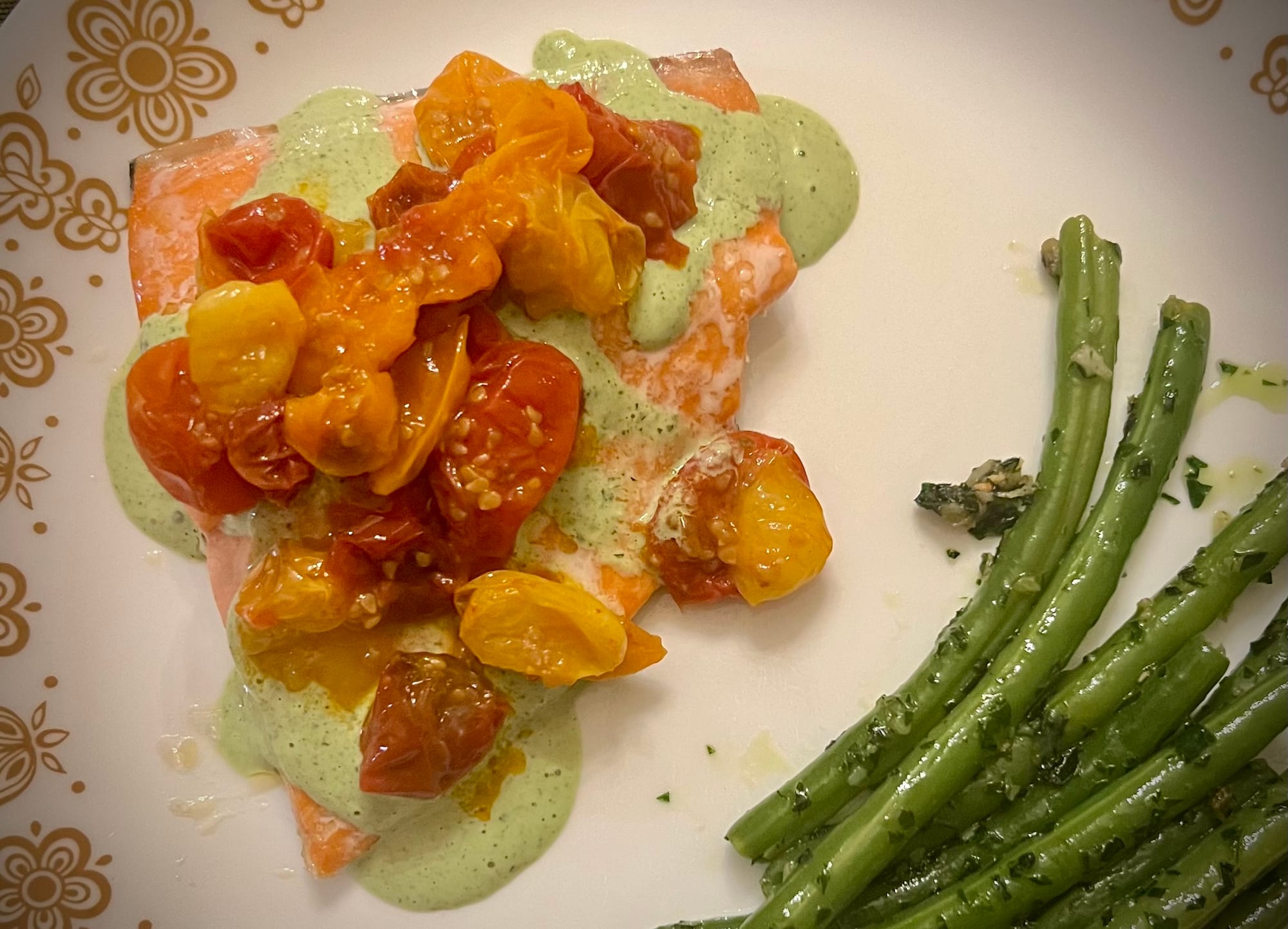
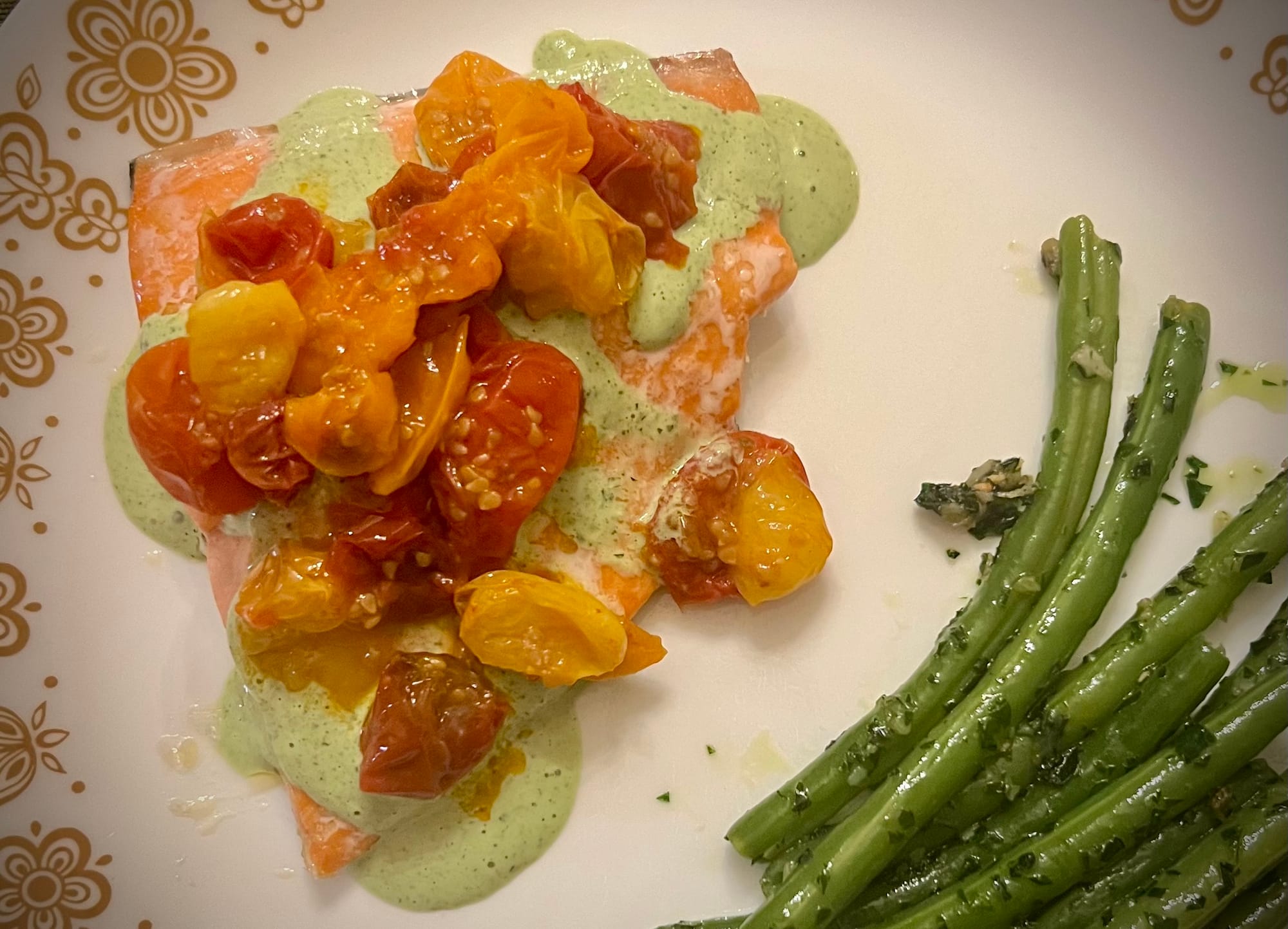
This is the second post in a five-post series about the sous vide cooking method:
- Sous vide pros & cons
- How I use sous vide (this post)
- How to try sous vide without special equipment
- Sous vide equipment
- Sous vide books, recipes, and other resources
I've been cooking sous vide for about a year and a half now. I still have a lot to learn, but this post will be a pretty good snapshot of how I use my sous vide right now. I use my sous vide about once a week. I cook chicken thighs and salmon most often, but I also cook chicken breasts, cod, and pork tenderloin, and use sous vide to make syrups and pickled onions.
Chicken thighs & breasts
I'll choose chicken thighs over breasts just about every time, but I do make both. The optimal temperature for breasts vs. thighs is quite different—breasts do better at a lower temperature (about 150°), but thighs don't start to get really delicious until they hit more like 175°.
For chicken times and temperatures, I recommend these guides from Serious Eats:


Now, you've no doubt heard, over and over again, that chicken must reach 165° to be safe. That's the magic target number when you're roasting in an oven, but sous vide works differently enough that the 165° rule doesn't apply. Killing pathogens is a function of temperature and time, and time is on our side in sous vide, allowing temperatures that are high enough to kill pathogens, but not so high that you dry out your chicken breast. I'll get into this more on Friday when I share resources about food safety.
If a recipe calls for pre-cooked chicken, I'm cooking it sous vide. I always season it with salt, ideally the day before but at least right as I'm sealing it in the bag. Here are two such recipes I've already shared here on the blog:
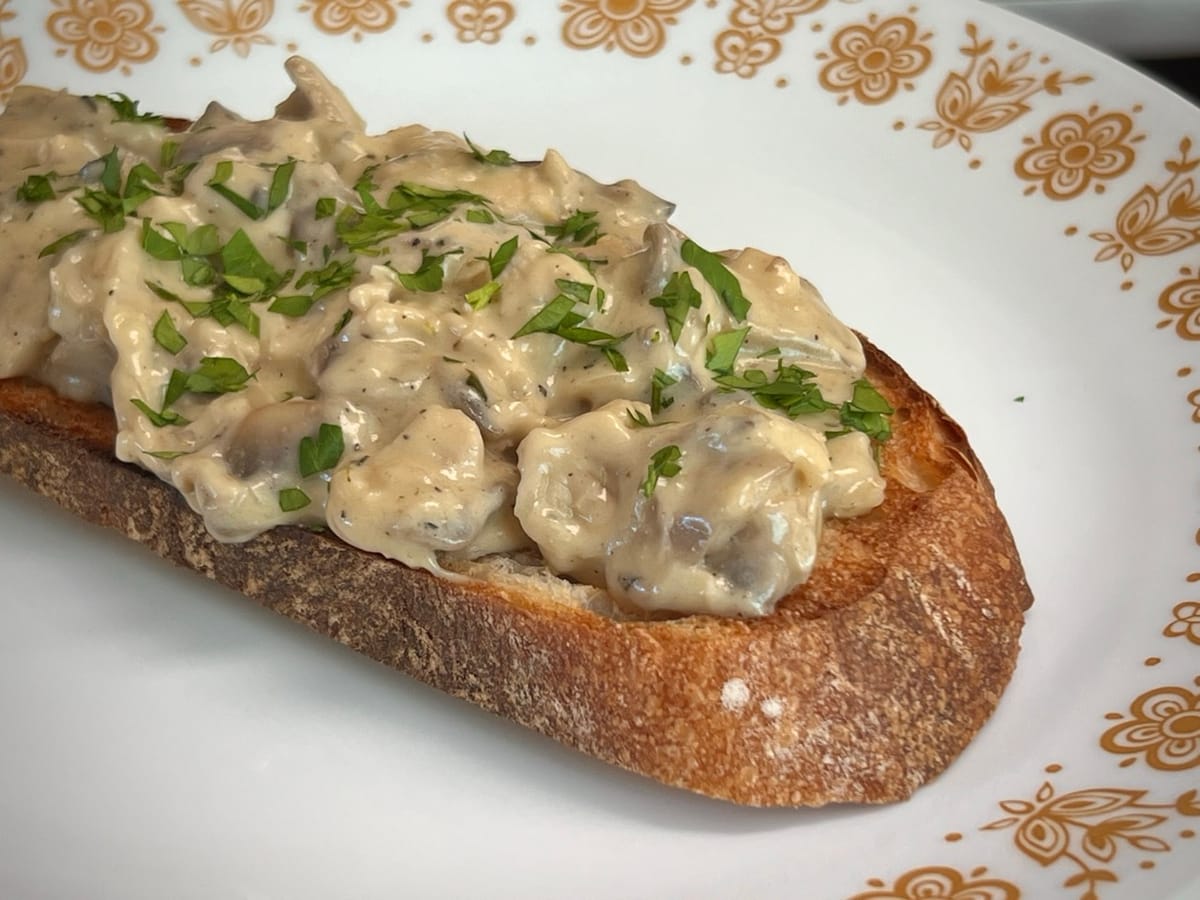
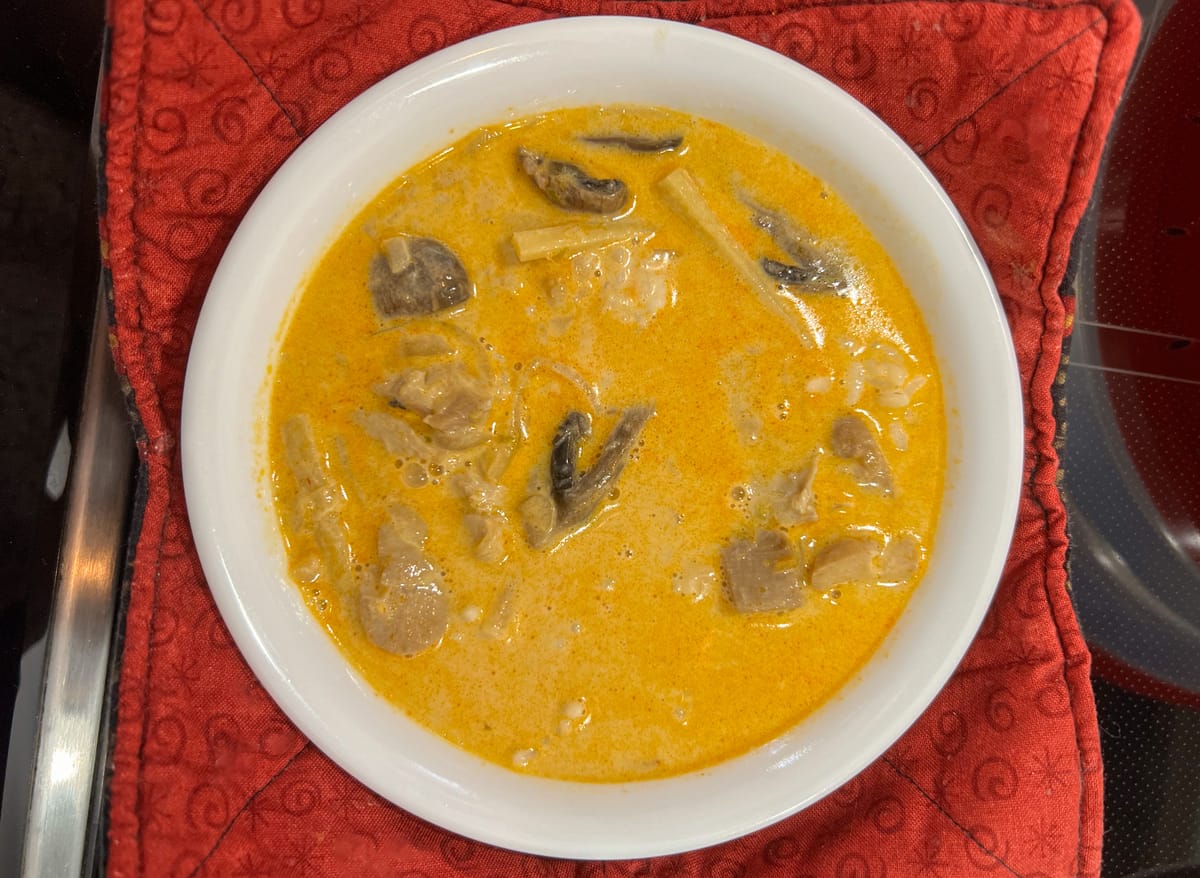
I'm also starting to figure out which chicken recipes can be adapted to use sous vide. If there's a Maillard reaction step in the recipe, I'll still do it the old way, rather than sous vide. But if not, or if I think I can achieve the Maillard after cooking (as with the Star Anise Chicken recipe), then my wheels start turning about how I can change it for sous vide. I'll explain how I'm adapting recipes later in this post.
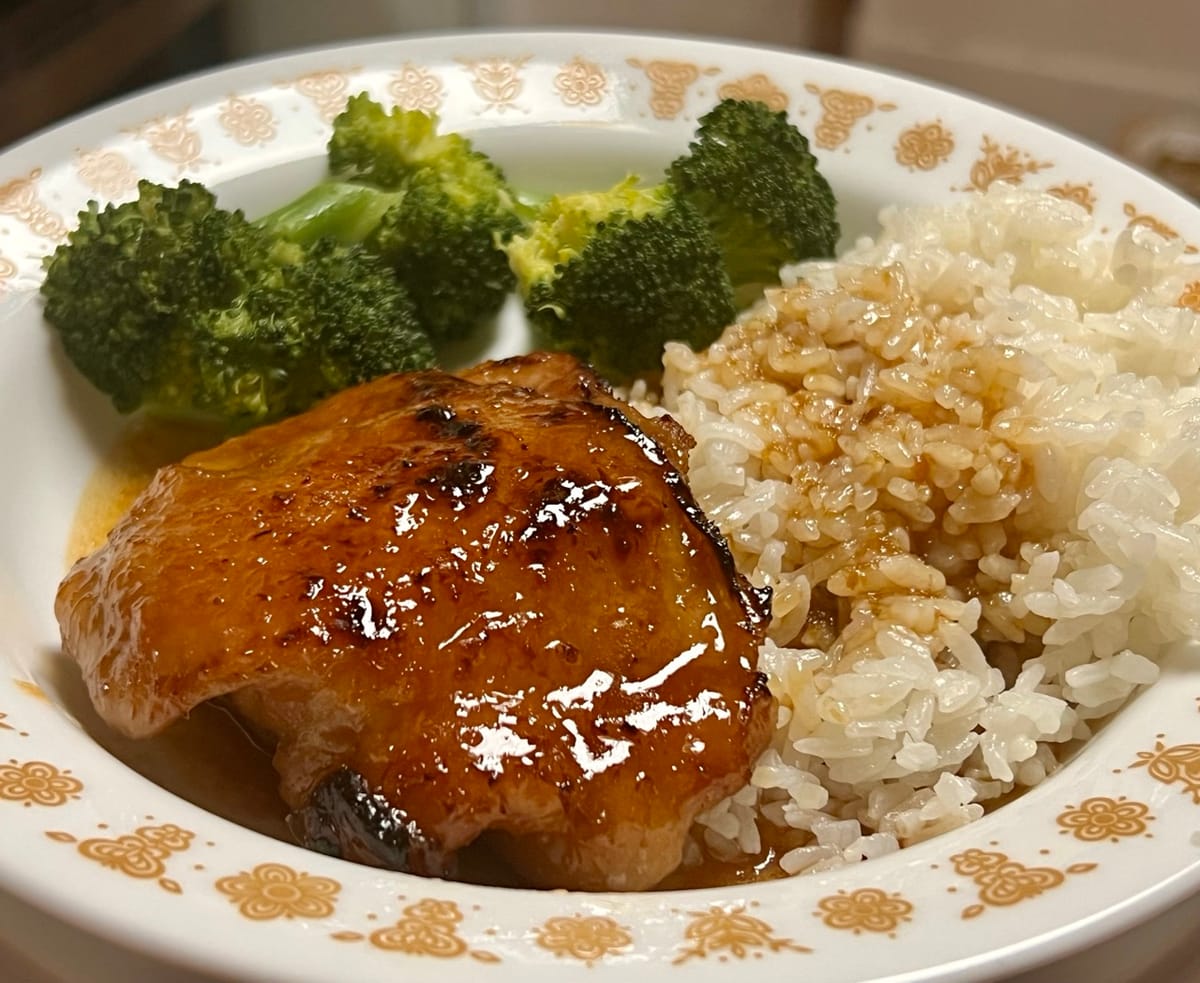
Fish
I'm a Seattle girl, and I love salmon. And cod, too. Overcooked salmon is both heartbreaking and common. A few years ago I found Samin Nosrat's recipe for slow-roasting salmon in the oven (Salt Fat Acid Heat, 2017), and if sous vide isn't for you I highly recommend going that route. But these days, sous vide is my go-to for salmon and cod.
You have to be a little more cautious with fish in sous vide than you do with other meats. It can be a bit fragile, though I've never had it fall apart on me. Also, where pork and chicken can hang out in the bath for a few extra hours, fish can only hang out for an extra half hour or so. The cooking times for fish tend to be on the shorter side, about 40 minutes, depending on the thickness of your filet.
If you purchase salmon or cod filets frozen into individual plastic packs, remove them from those packs before you thaw the filets. The plastic they use isn't the kind that's safe for cooking, so you'll have to transfer them to a sous vide bag. And the filets are much easier to get out of those packs when they're frozen; they're too delicate once they've thawed. You can sous vide frozen filets, just make sure you add extra time to account for this.
I use salt and olive oil on the salmon filet before bagging it, and I usually set the water temperature to about 120°. When the salmon comes out, you can remove the skin (it comes off readily after cooking), or you can carefully pat the skin dry and give it a sear in a hot pan to crisp it up (if you do this, chill the still-bagged filet in an ice bath first, to reduce risk of overcooking the fish). Me, I just eat the skin as-is.
For salmon times and temperatures, I recommend this guide from Serious Eats:

I usually eat the salmon with a simple sauce or relish, or sometimes I use the salmon for a salad with a miso-ginger-soy dressing, and cod is great with pesto. One of my favorite ways to serve sous vide salmon is with roasted cherry tomatoes and my Green Goddess Dressing:
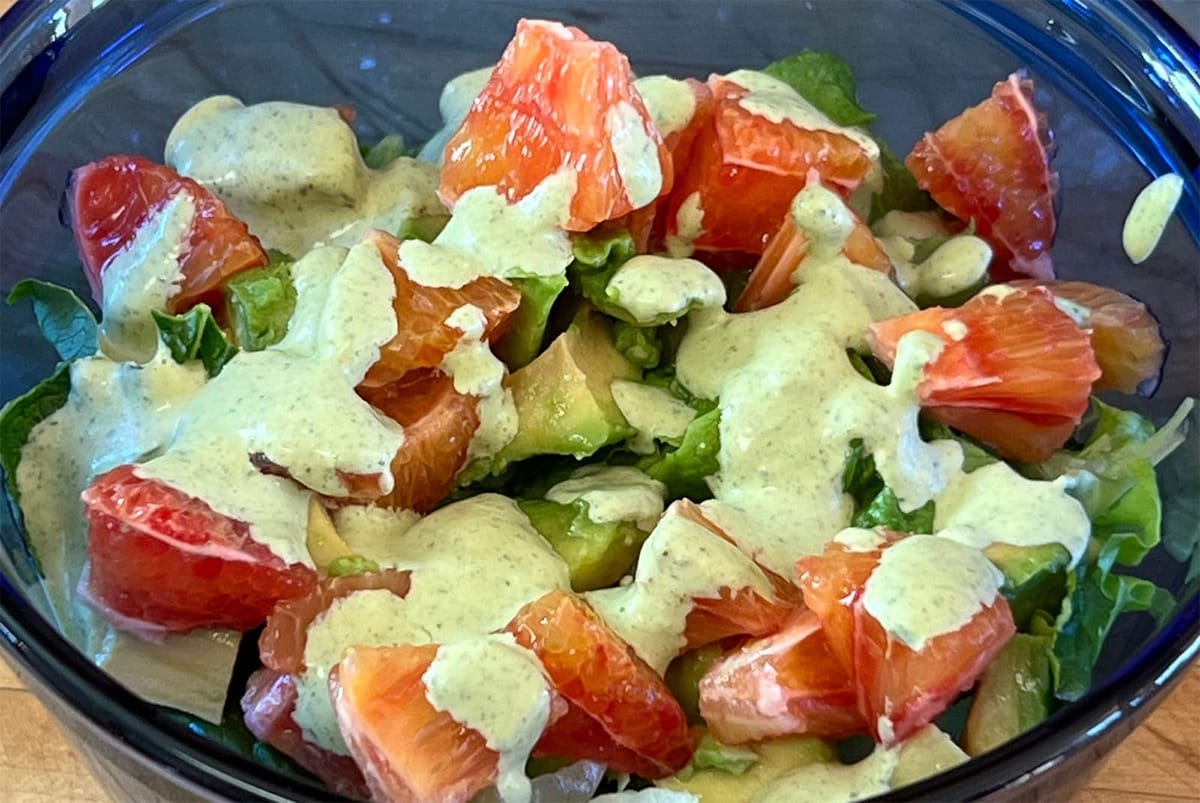
Pork tenderloin
Pork tenderloin is one of the dishes we turn to for a semi-special meal, and using sous vide ensures I won't mess it up and overcook it.
I like pork tenderloin cooked at about 140° for an hour and 30 minutes. Seasoned well with salt, of course, ideally the day before cooking. I sometimes cook the tenderloin a day or two ahead of time, freeing my time to focus on other things on the day of the meal. After cooking the tenderloin sous vide, I dry it off, apply a coffee-chile spice rub (that's a gift link to a NY Times recipe, it'll work for a couple weeks), and sear it in a hot cast iron pan. For serving, I pair it with a sauce. Some of my favorites with pork tenderloin are chimichurri, a cherry & onion relish, or good ol' applesauce.
For pork tenderloin times and temperatures, I recommend this guide from Serious Eats:

Syrups & Fruit
Oh man, this is such a fun thing that I probably should have included it in my sous vide pros & cons post. It's a great way to use up fruit that's not going to last much longer.
Back when I was making mixed cocktails all the time, I was making a lot of flavored syrups. But doing it with fruit can be tricky. You want the fruit to break down enough to open up its flavors, but take it too far and you lose the brightness of the fruit and wind up with something that tastes dull and cooked.
Sous vide to the rescue! I'll muddle some berries with some sugar, maybe add some lemon zest, a teeny pinch of salt, and stick it in the water bath at 135° for a bit more than an hour. The result is a syrup with bright, vibrant fruit flavors. And it's been pasteurized! Goes great with a little ginger beer or lemonade. I've also done this with raspberries, and used them to make a gorgeous Raspberry Meyer Lemon Tart, a variation on my Meyer Lemon Tart.
This past Christmas, I baked a fruitcake, and it called for letting dried fruit soak in dark rum for a few days—I stuck them in the sous vide instead. I hadn't made fruitcake before so I can't directly compare, but I was happy with how the fruit turned out and will do that again the next time I bake a fruitcake.
Quick pickles
Deciding I want to have pickled onions, and having them ready to use that same day, is a game changer. You're probably familiar with the quick pickle process, where you put some veggies in a brine, let it sit for a few days, and bam! Bright, pickled fun. Sous vide accelerates the process, and instead of waiting a few days you'll have pickled vegetables in a matter of minutes!
I have a recipe for pickled red onions I love, and I'll share it soon. I've been making them for years, but I used sous vide for the first time about a month ago, and I'm sold.
I still need to try...
I haven't yet cooked shrimp sous vide. Shrimp cook so quickly that it's very easy to overcook them and wind up with rubbery shrimp. Sous vide seems like an ideal way to avoid that problem. Scallops, too!
Custard-based desserts are supposed to work great with sous vide. Most of the recipes call for filling a bunch of mini mason jars and putting them in the water, but I don't love the idea of eating out of mason jars. I've seen folks cook a custard in a bag, and then transfer it into eating dishes to set in the fridge, and that's what I'd like to try at some point.
On that note: you can cook a custard base for ice cream sous vide. I could also sous vide some raisins in dark rum, and make rum raisin ice cream.
Another thing folks like to cook sous vide is eggs, right in the shell. Haven't tried that yet.
What I'm not interested in
Beef. I think my beef eating days are largely behind me at this point. Not counting corned beef, though. Love that stuff. But I doubt I'll be making it myself, I only need a few pieces at a time. Sous vide steaks are a very popular thing out there in the wider world, though.
Big giant blocks of meat. Multiple pounds in one hunk. Folks do it, pretty regularly, but it can take an entire day of sous vide, and I don't want that much meat.
Sad meat and fish are still sad after sous vide. A cheap cut of meat is going to turn out better in sous vide than it would have in another preparation, but sous vide is not a magic wand. If anything, I'm getting better at discerning quality meat now that I'm using sous vide. Maybe it's because the good stuff is getting cooked right so it has a chance to shine.
Adapting existing recipes to use sous vide
This is where I'm starting to get out of my comfort zone and try new things: taking existing recipes, ones I've tried before and loved, and seeing if I can make them even better by changing the cooking technique to sous vide.
As an example, I'll walk you through how I adapted the New York Times recipe for Coconut-Gochujang Glazed Chicken, by Kay Chun. Oooh, I love this recipe, I make it all the time. This is a gift recipe link, it will work for a couple of weeks:
In the original recipe, you cube raw chicken, cook it in a skillet for a few minutes along with some ginger, then you add a bunch of liquid ingredients: coconut milk, gochujang paste, demerara sugar, and soy sauce. You simmer the chicken in the liquid, "until the chicken is cooked through," about five minutes.
The original recipe calls for chicken breast, and it takes a deft hand to time it right: cook it too short and it's underdone (yuck!), but if you cook it too long, the chicken will be tough. If your chicken cubes are uneven in size, you can wind up with a mix of overdone and underdone. So I was making it with chicken thighs instead, which are much more tolerant of heat.
But! Sous vide can solve this altogether. Even with uneven cubes of chicken breast, it can be perfect.
Method one: sous vide the chicken only
I choose to sacrifice the little bit of browning that happens at the start of the recipe, and instead I start by cooking the chicken sous vide. You can cube it before cooking or after cooking; I prefer to cube it after cooking because I'm a weenie about handling raw meat.
Here's the really important bit: after cooking, the bag holding the chicken is going to have a bunch of gelatinous juices. Save these! These rich juices have a luscious kapow! of chicken flavor, and we're going to add them to the sauce.
In a saucepan (doesn't need to be a skillet anymore, you don't need that much surface area), cook your ginger for a couple minutes to soften it, then add all those liquid ingredients, and the gelled juices from the bags. Don't add the chicken, not yet! Once the gochujang and sugar have melted and the sauce is combined, let it keep cooking to reduce a bit. Then lower the temperature and add the chicken pieces, not long enough to cook, just to warm up and get coated in the sauce.
Method two: sous vide the chicken and sauce together
Stir your sauce ingredients together, then add it to a vacuum-seal bag with cubed raw chicken, and sous vide it all together. The downside here is that vacuum sealing with liquid can be trickier than just a breast, plus the sauce doesn't get a chance to reduce so it might be a bit runnier. You could try reducing the sauce on the stovetop first. This option could be fun to explore, though, because you could divvy up the dish across four separate vacuum-seal bags, and create individual servings that could be refrigerated and eaten over the course of several days.
I haven't tried method two yet for the Coconut-Gochujang Chicken, but I have used method one several times—cooking only the chicken sous vide—and I've been very happy with it. I love not messing with raw chicken as much, and the perfect texture of the chicken is ideal.
Method two—using a sauce as a marinade inside the sous vide bag—is what I've done for the Star Anise Chicken recipe, with an extra step of temporarily removing the chicken and reducing the sauce at the end of cooking (easier there because you're working with whole bone-in chicken thighs, not little pieces).
I have many unexplored avenues when it comes to playing around with recipe adaptation. Maybe some recipes could be cooked all together in individual serving bags, and go straight to the freezer, so future me has great meals at the ready? Maybe I can skip overnight marinades and sous vide in a marinade instead?
Coming tomorrow
Before I took the leap into sous vide, before I invested in buying a vacuum sealer and an immersion circulator, I wanted to find out for sure if the technique really made a difference. Tomorrow, I'll detail how I cooked sous vide using the ordinary kitchen equipment I already had, and you probably have, too.
